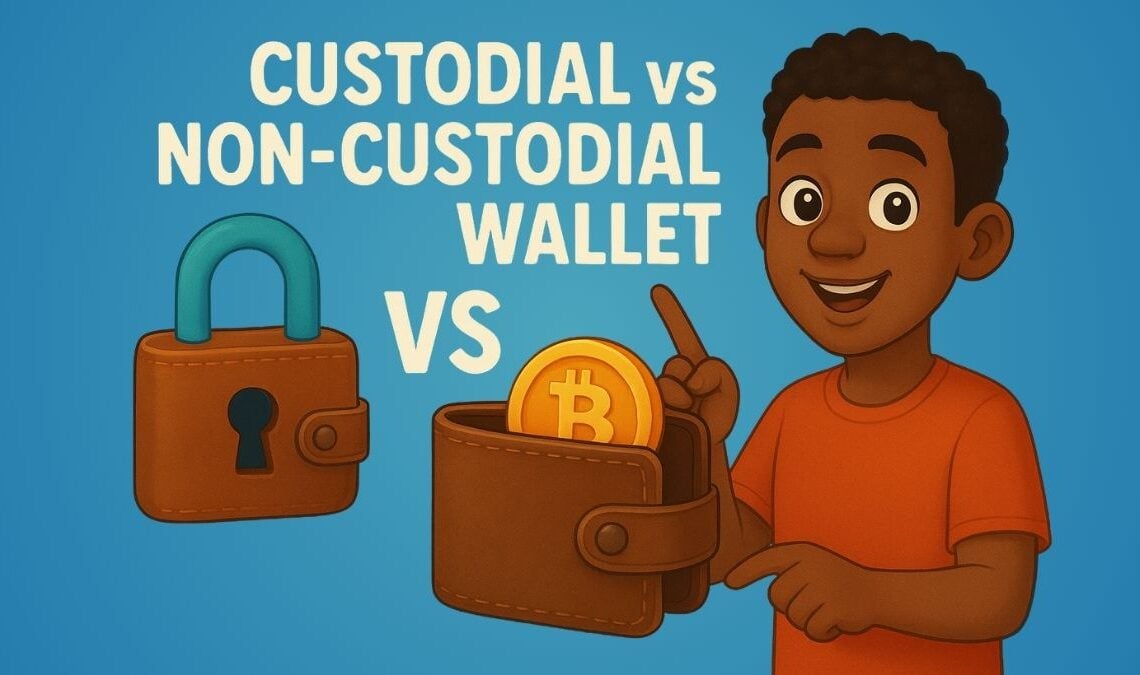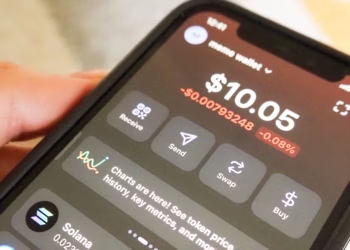When getting started in crypto, one of the first questions you’ll face is this: custodial vs non-custodial crypto wallet—what’s the difference, and which one is safer? In 2025, understanding how these wallet types work is essential for managing your digital assets securely and efficiently.
Whether you’re a beginner buying your first Bitcoin or an advanced user interacting with DeFi protocols, choosing the right type of wallet can impact how much control, privacy, and responsibility you have. Let’s explore the key differences and help you decide which fits your needs best.
Table of Contents
ToggleRelated posts
What Are Crypto Wallets?
A crypto wallet is a tool that lets you store and manage your private keys, which give you access to your cryptocurrencies. While wallets don’t technically hold your coins (which live on the blockchain), they’re the gateway to controlling and transferring your funds.
There are two main types of wallets: custodial and non-custodial. The difference lies in who controls the private keys—you or a third party.
Custodial Wallets: Convenience with a Trade-Off
A custodial wallet is one where a third party—like an exchange (e.g., Binance, Kraken) or wallet provider—manages your private keys for you. This is similar to how banks hold your funds.
Pros:
- Easy to use, especially for beginners
- No need to worry about storing private keys
- Often come with built-in recovery options
Cons:
- You don’t control your crypto directly
- If the provider gets hacked or freezes accounts, your access could be restricted
- Not ideal for users prioritizing privacy or full control
Custodial wallets are best for users who value convenience over autonomy, or who are actively trading and want fast access to exchanges.
Non-Custodial Wallets: Full Control, Higher Responsibility
In a non-custodial wallet, only you control the private keys. These wallets can be software-based (like MetaMask or Trust Wallet) or hardware devices (like Ledger or Trezor).
Pros:
- You are the sole owner of your crypto
- Greater privacy and security, especially for long-term storage
- No third-party risk of freezing or mismanaging your assets
Cons:
- You’re responsible for backup and recovery
- If you lose your private key or seed phrase, you lose access permanently
- Slightly steeper learning curve for beginners
Non-custodial wallets are ideal for those who want to embrace the “be your own bank” philosophy and are comfortable taking on more responsibility.
Use Cases: When to Choose One Over the Other
Still unsure which to pick? It depends on how you plan to use your crypto:
| Use Case | Best Wallet Type |
| Daily trading or short-term holding | Custodial |
| Long-term storage or cold storage | Non-Custodial |
| DeFi, NFT, or Web3 interaction | Non-Custodial |
| Beginners or casual users | Custodial (with caution) |
For instance, if you’re just getting started and using a trusted platform like Coinbase or Kraken, a custodial wallet might make sense. But if you want to join a DAO, stake tokens, or explore dApps, a non-custodial wallet is required.
Final Thoughts: Custodial vs Non-Custodial Crypto Wallet in 2025
The debate around custodial vs non-custodial crypto wallet boils down to a question of control vs convenience. In 2025, as crypto tools evolve and adoption grows, users now have more wallet options than ever before.
Custodial wallets are improving their security practices, while non-custodial wallets are becoming easier to use—even for beginners. Whichever you choose, make sure you understand the risks and responsibilities that come with it. Crypto empowers ownership, but that power also comes with accountability.










